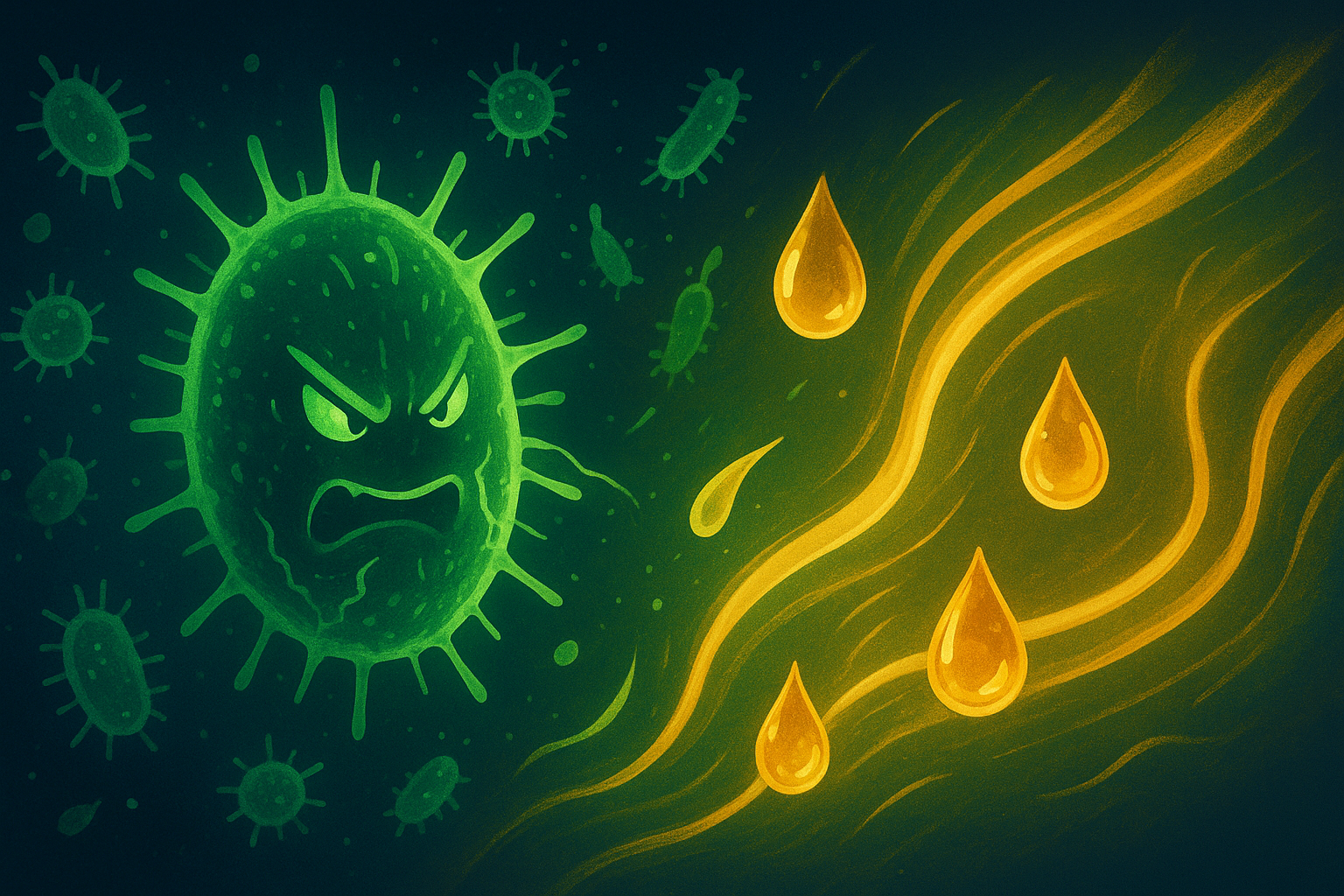Hey there!
Do you know what oddly keeps me awake at night? 👀 Being infected with a bacteria so strong that not one medicine can cure it. The thought of superbugs—bacteria that laugh in the face of our strongest antibiotics—honestly terrifies me. And it’s not some distant sci-fi fear. MRSA, drug-resistant Klebsiella, and other nasties are already here, evolving faster than we can develop new drugs.
The interesting thing about this is that scientists have been digging into natural solutions, and essential oils are showing surprising promise in the lab against these superbugs.
What exactly are “superbugs”?
Superbugs are bacteria that have developed resistance to multiple antibiotics. 🦠 Think of MRSA (Methicillin-resistant Staphylococcus aureus) or multidrug-resistant E. coli. They’re dangerous because the usual treatments don’t work, and infections can spiral into life-threatening territory. Hospitals dread them. Patients fear them. And researchers are racing against time to find alternatives. 🔬
Can essential oils really fight resistant bacteria?
Turns out…maybe…. yes. ⚖️ Several studies have shown that essential oils like oregano, tea tree, thyme, cinnamon, clove, and even peppermint contain compounds (like carvacrol, thymol, eugenol, cinnamaldehyde) that can:
· Disrupt bacterial cell walls (literally poking holes in them)
· Mess with biofilms (the slimy shields bacteria form to protect themselves)
· Reduce resistance mechanisms when used alongside antibiotics (making bacteria vulnerable again)
Some essential oils have shown minimum inhibitory concentrations (MICs) against MRSA and other resistant strains in lab studies, sometimes in a similar range to antibiotics. Pretty amazing, right? 🤩
What about blending oils with antibiotics?
Here’s where things get even cooler. Researchers have tested combinations of essential oils with existing antibiotics …and in some cases, the results suggest synergy — where the oils help antibiotics work better at lower doses. This synergy could, in theory, make our current drugs last longer by boosting their effectiveness. 🤔
Are there any risks?
Of course, it’s not all good vibes and pretty scents. Essential oils are potent. The same compounds that destroy bacteria can also irritate skin or damage tissues if used incorrectly. ⚠️ That’s why most of these findings are in vitro (petri dishes, test tubes) or animal studies…not yet proven safe or effective in humans at medical levels. ❌
Another challenge is standardization. A bottle of tea tree oil from one supplier might have a different composition than another. Without consistency, it’s hard to run clinical trials and translate lab results into medicine.
Why does this research matter?
Even with these hurdles, essential oils bring chemical complexity, with many active compounds acting at once. That could make it harder for bacteria to adapt compared to single-target drugs. Which in turn could make it harder for microbes to adapt and survive. 🦸🏻
We’re still far from replacing antibiotics with oils, but as resistance grows, science is showing us that nature’s chemistry cabinet might hold valuable allies.
Superbugs aren’t slowing down, and neither should we. Researchers worldwide are exploring how essential oils could work as synergistic boosters, or even disinfectants in healthcare settings. The same oils we use at home are being studied for inspiration in developing new antimicrobial approaches. Who knows what breakthroughs lie ahead? 🌇
And while products like Oleia Oil aren’t medical treatments for infections, it’s pretty exciting that the same natural oils are being investigated at the cutting edge of antimicrobial research, isn’t it? ⚕️
Show me your bottle and I’ll show you mine? ’Til next time! 🤓
xo, L

References:
https://pmc.ncbi.nlm.nih.gov/articles/PMC3950955
https://pmc.ncbi.nlm.nih.gov/articles/PMC8070240


